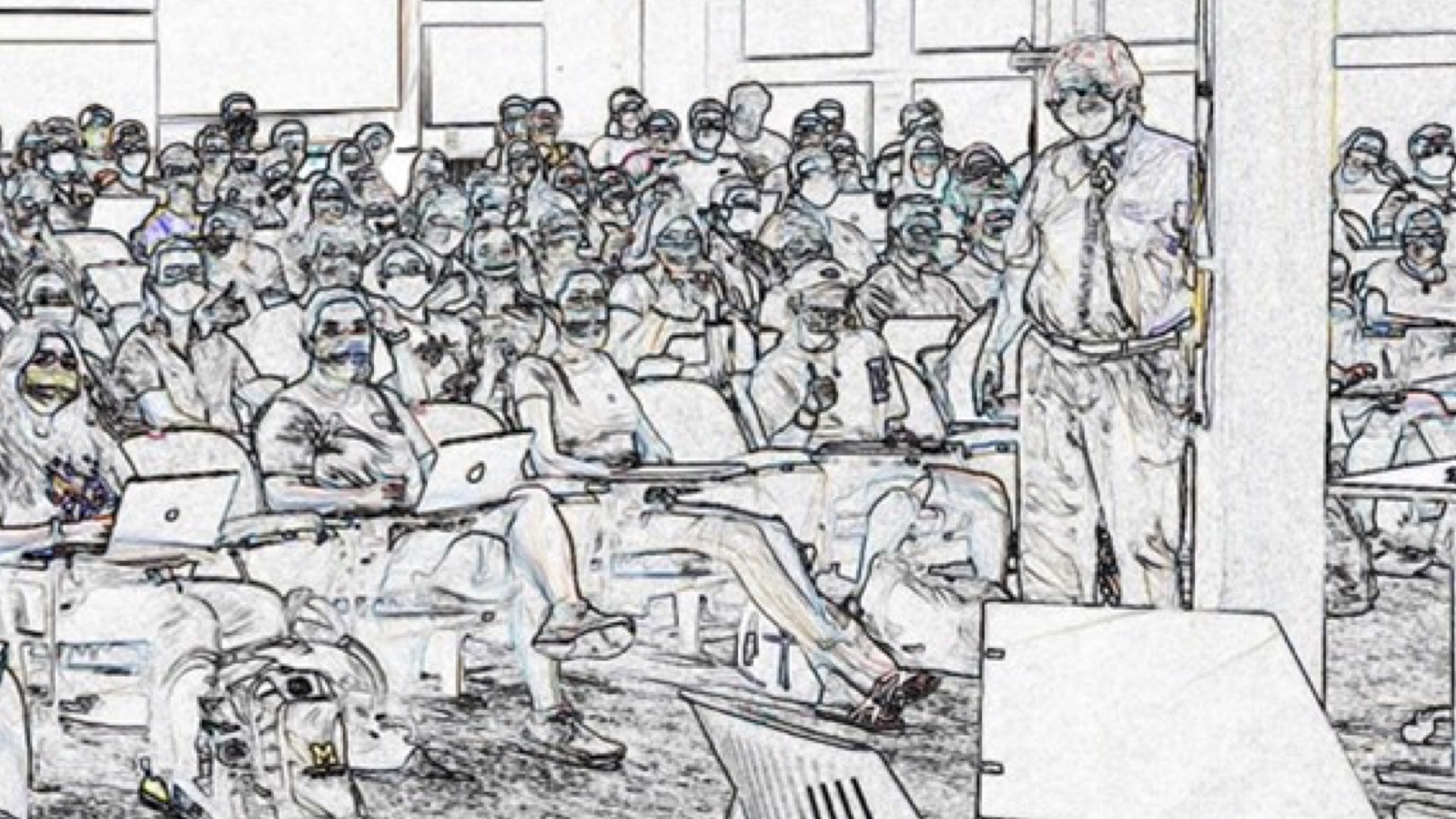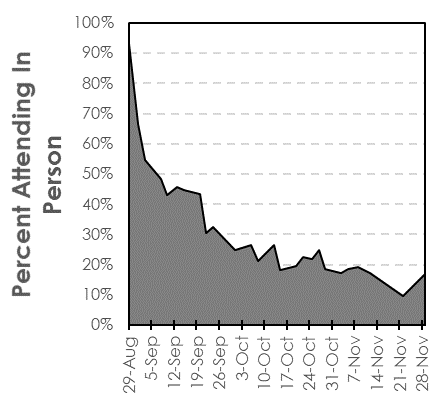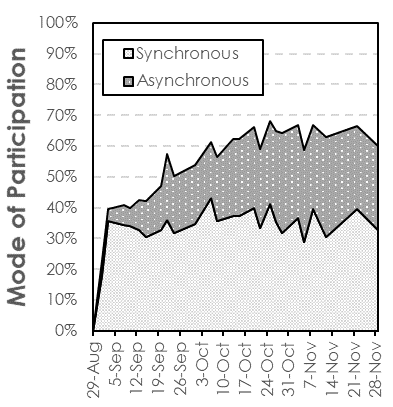When given a choice, do students prefer in-person classes?

At the end of 2021, there was tension on my campus between faculty and students who advocated for a delay in classes to reduce the threats posed by the Omicron strain of COVID-19 and students who wanted to maintain the present schedule and focus on in-person courses.Footnote1 As a faculty member, I sided with those pushing for in-person courses. My own research has shown that students who participate remotely, even when offered the option of synchronous participation, tended to do less well than their counterparts who physically came to class. Some of that difference, however, could be attributed to the fact that students with lower grade point averages entering the course were more likely to choose to participate remotely.Footnote2
But while I supported the in-person position in theory, my experience has also been that given the choice, students do not prefer attending class in person. I teach a class, "Extreme Weather," that is a service-level course (CLIMATE 102) designed to meet the science distribution requirement at the University of Michigan. In the design of this course, I allow students the option of coming to class in person, participating synchronously and remotely during class time, or participating asynchronously. In all cases, students are incentivized to participate as I offer class activities. Students receive "participation" points for those activities; students participating asynchronously receive points if they participate by midnight of the class day.
When teaching this course in the Fall 2021 term, I used technology that allowed students to respond to class activities via any Wi-Fi device either in class or away. The number of activities varied from class to class but averaged about four per 50-minute session. Given those rules, about 85% of students (N=230) participated in each class session. While interactive activities were offered daily, the large size of this course and the limitations of the lecture hall did not permit many opportunities for teamwork.
One of the questions students answered every day was, "For today's class I am participating: (a) In the classroom; (b) Synchronously during class; (c) Asynchronously after class." Since there is no loss of credit for mode of participation, I assume students responded honestly. This hypothesis was tested by comparing the number who answered "c" (that they participated asynchronously), with the timestamps of their actual participation in class activities for eight random days in the semester. Students who self-reported asynchronous participation totaled 38%, while the percent who answered questions outside of class time—as inferred from the response timestamps obtained from the database—averaged 43% (the latter would include students who modified their answers after class). Hence, the assumption is not considered unreasonable.
Students' Preferences
So, what do students prefer, given the choice? Given reasonable options, students in my class did not prefer the in-person mode of course delivery. In fact, the number of students who physically attended class dropped precipitously to an average of around 20% by mid-semester (see figure 1). At the same time, about one-third of students opted to participate synchronously during class time (see figure 2), with a growing number, reaching about 30%, participating asynchronously. The number of students who didn't participate any given day was relatively consistent throughout the semester at about 15%.


There was a large difference in preferred mode of attendance between first-semester students and upper-level students. First-semester students attended in person during about 43% of the class sessions while upper-level students attended in person only about 27% of the time. That said, the total "during class" (in-person + synchronous) participation was similar, with 71% of first-semester students and 74% of upper-level students participating during class time.
At the end of the semester, students were asked: "Would you recommend live streaming be available in all your courses?" Their responses (see figure 3) shows that over 80% of students feel live streaming should be available in all large courses at the least.

Outcomes
I expected that students attending in person would receive the highest grades, but that was not true for this course. Table 1 shows the average exam scores for students choosing the different modes. There was no consistent pattern, except for the lower grades for those who were no-shows for more than 50% of the semester.
| In the Classroom | Synchronous | Asynchronous | No-Show | |
|---|---|---|---|---|
| First-semester | 79.9 | 80.2 | 84.2 | 57.8 |
| Upper-level | 81.2 | 75.9 | 79.7 | 72.8 |
Whether these preferences and results would be replicated in other survey-level STEM courses is unclear. However, I speculate that they represent students' attitudes about large classes in which team activities are less common. What is clear is that students welcome the flexibility of choosing the mode of course delivery. In the current semester, many faculty members have remained skeptical about returning to the classroom in person. Additionally, faculty with young children are having difficulties finding day care opportunities. During this challenging time of the COVID-19 pandemic—and, I would argue, its after-effects—the availability of options to meet both students' and instructors' comfort level, wellness, and nonacademic demands is appropriate and should be encouraged, particularly in larger courses.
Notes
- George Weykamp and Kaitlyn Luckoff, "Over 800 UMich Faculty Members and Students Pen Open Letter Calling on University to Modify Beginning of Winter 2022 Semester," The Michigan Daily, December 21, 2021; George Weykamp and Kaitlyn Luckoff, "Over 700 UMich Students Send Open Letter Advocating for Fully In-Person Semester amid Calls to Modify Plans," The Michigan Daily, December 26, 2021. Jump back to footnote 1 in the text.
- Perry J. Samson, "Student Behaviors in a Blended Synchronous Course," Journal of Geoscience Education 68, no. 4 (June 4, 2020). Jump back to footnote 2 in the text.
Perry J. Samson is a Professor in the Department of Climate and Space Sciences and Engineering at the University of Michigan.
© 2022 Perry J. Samson. The text of this work is licensed under the Creative Commons Attribution-NonCommercial-ShareAlike 4.0 International License.
